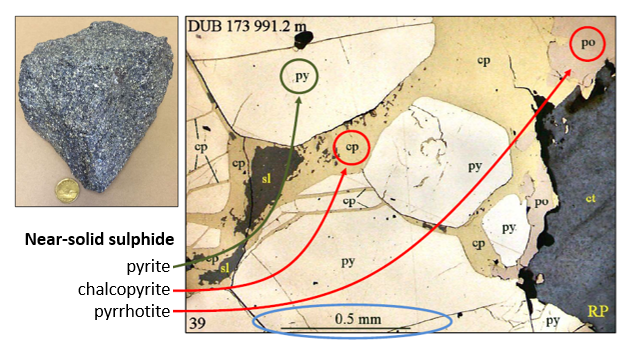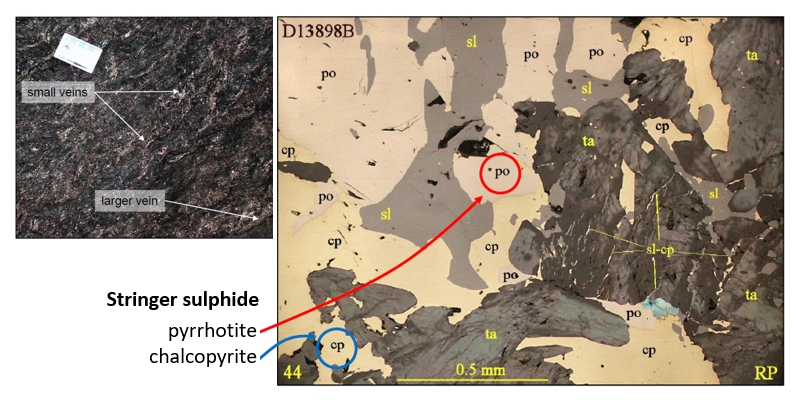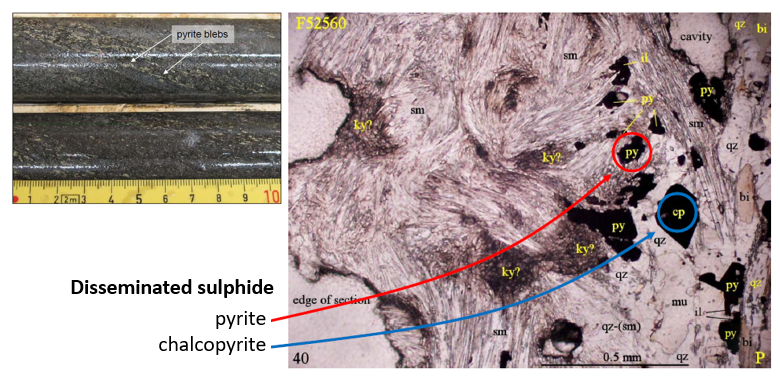Properties
Because of the abundance of sulphide in the ore body, Lalor is geophysically characterized as a deeply buried good conductor that exhibits electrical responses that are distinct from the relatively resistive background. The table below summarizes some typical conductivity values of common sulphide minerals.
The specific electrical conductivity of mineralized rocks at Lalor depends on the type, content and size of sulphides. Given the possible variation in the conductivity of ore bodies, we analyze the expected relative conductivities of the three mineralization types based on the rock sample information from HudBay ([Tay14]).
Ore-bearing minerals |
\(\sigma_{min}\) (S/m) |
\(\sigma_{max}\) (S/m) |
|---|---|---|
Pyrite |
0.003 |
1 |
Chalcopyrite |
1 |
10,000 |
Pyrrhotite |
4500 |
71,000 |
Near-Solid Sulphide
Mineralogy: dominantly pyrite and sphalerite, lesser amounts of chalcopyrite and pyrrhotite.
Sulphide Content: > 40%
Abundance: 1 ~ 10 mm diameter, 5 ~ 30 m thick layers.
Conductivity: very high due to the content and size.

Stringer Sulphide
Mineralogy: dominantly chalcopyrite and pyrrhotite, lesser amounts of pyrite, sphalerite, and galena.
Sulphide Content: more than 50% in veins.
Abundance: veins 0.5 cm ~ 1 m thick, zones up to 10 m thick.
Conductivity: very high due to the type and content.

Disseminated Sulphide
Mineralogy: pyrite and lesser amounts of pyrrhotite, sphalerite, chalcopyrite and galena.
Sulphide Content: less than 10 ~ 20%.
Abundance: isolated grains in a halo zone 10 ~ 100 m thick.
Conductivity: moderately high due to the size.
